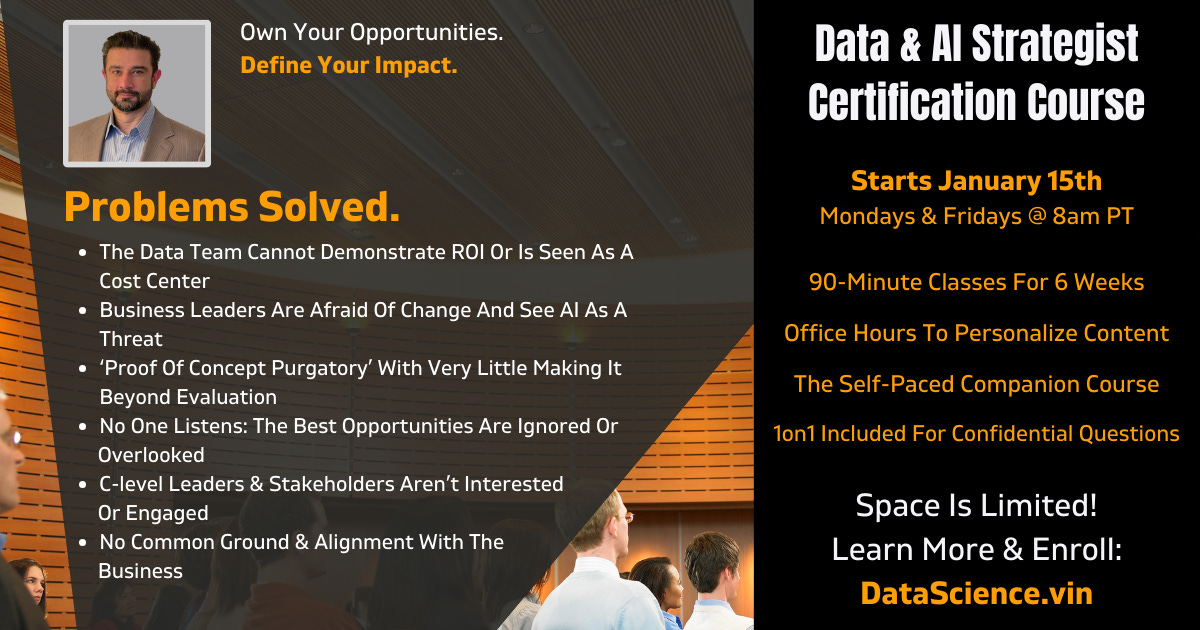This weekend’s post comes from a subscriber question. Please take advantage of your subscriber benefits, including office hours, course discounts, and reserved access to new cohorts.
Have a great week, and let me know your thoughts or ask questions in the comments. If you enjoy this article, consider liking and sharing it.
ROI is never easy to estimate for technology products. Customer and internal user-facing products have the same challenges whether they leverage AI or not. Nothing creates value in isolation. Well-organized businesses create and deliver value to customers as a team, with each organization contributing.
That’s a sign of excellence and an ROI attribution nightmare. If every team contributes to value creation, how does the data team define, measure, and support its business impact? This article explains a core concept from my Data and AI Product Management and Strategy courses. Measuring ROI.
Estimating the opportunity size happens upfront before the product is built. Most data professionals point out the obvious challenge. Data science is often an unpredictable, iterative process. Results aren’t guaranteed, so how do you estimate the opportunity size with that uncertainty level? Part one of this article answers that question.
I need to explain how we overcome a massive barrier along the way to estimating the data team’s impact. Most of the business’s KPIs and OKRs (going forward, I’ll just say ‘metrics’) don’t measure what the business thinks they do. If we’re held to those standards, estimating ROI is impossible. In part two, I will explain KPI maturity and set up for the next article, where I explain how to improve KPI maturity.
There’s a foundational truth behind terrible metrics. The business doesn’t really understand itself. Some processes are well mapped out, but the rest are opaque. Technology supports operations and processes but isn’t intentionally connected to them. Data is used to support operations and processes, but data gathering is also disconnected from business context.
If the business doesn’t understand itself, how can any team measure impact? In the last section, I explain how.





